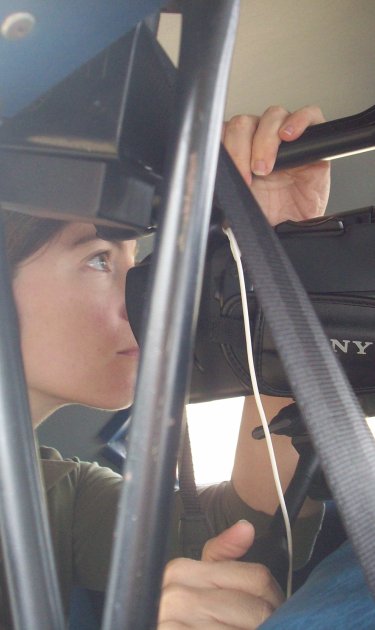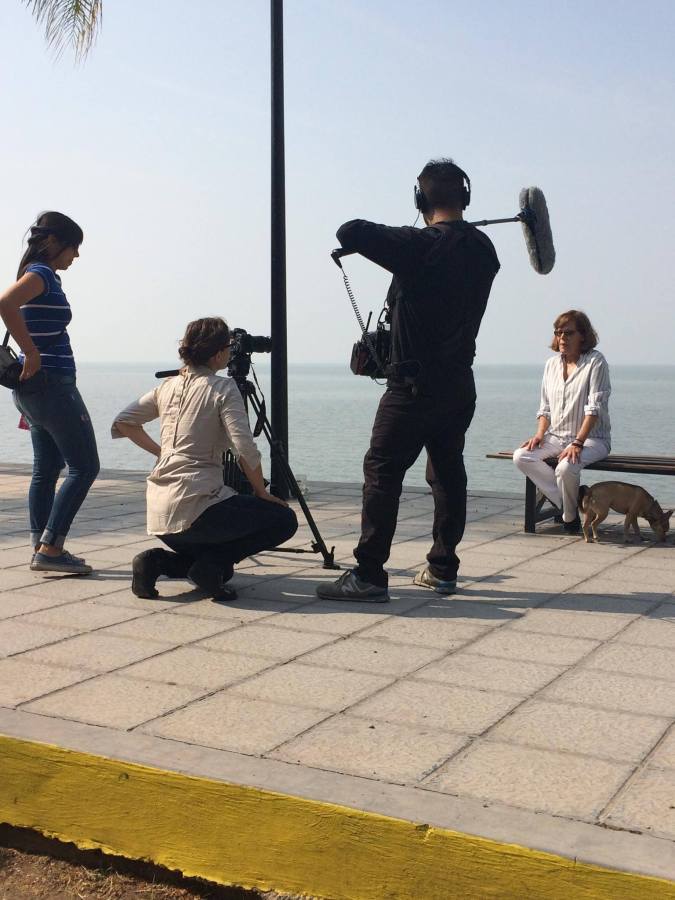In Mexico, in a town called Ajijic, you’re bound to find a lot of Americans. Like, a lot. They’re not there on a trip or on vacation. These aren’t young spring breakers. They are, for the most part, elderly Americans who have made Ajijic their retirement home. Filmmakers Alana Simões and Jose Ramón Mikelajáuregui were so fascinated by this migratory story, which has been going on for more than a century, that they’ve been developing an entire documentary series around it. Its title? The Mexican Dream.
The 13 episode series wants to flip the script on Mexican-American migration. Instead of the habitual review of Mexicans striving for a better life in the US, The Mexican Dream portrays the other side of the coin: North American migrants who settle down in México to spend the rest of their life there. Still in its early stages, their project will bring Simões and Mikelajáuregui to this year’s 2017 Latino Media Market program as Fellows. This means that during this month’s NALIP Media Summit, they’ll meet one-on-one for scheduled pitch meetings with industry representatives who provide sound advice on how to advance their project to the next level.
Ahead of their trip to Los Angeles, Remezcla chatted with both filmmakers about their desire to tell another side of the Mexican-American story, one from the other side of the border. They talked about the need to show constructive relationships between both countries, why some Americans are finding solace down South, and why their project got a stronger sense of urgency following the U.S. election. Check out some highlights below.
The NALIP Media Summit takes place in Los Angeles on June 22-25, 2017. Get your Summit pass here.
On How the Project Began
Alana: Twenty years ago my mother went to live in Chapala, which is this place very near to Guadalajara. She went to live there and I met this American community. I didn’t know anything about them. When I saw that there were like 20,000 North Americans living there, it was really surprising for me in this little town in Mexico. I started asking why they were there and all this time I was living in Spain, so I did the research like once per year when I came to visit my mother. I’d ask many things and I met a lot of people. But then I came to live in Guadalajara two years ago. That’s when I began to develop the project. Then we had the election and when Trump won, it was more interesting for us to see that many Americans started coming more here.
On That Provocative Title
“Lina is always telling me, ‘We’re on the right side of the wall now.'”
Alana: Now we’re in the development phase. I have a lot of characters. There are a lot of interesting people, some artistic people. People who really live in like another time. Because Chapala is like going back in time. They are baby boomers and the parties and the music festivals are like stuck in Woodstock in the sixties. So when I met more and more people it was very funny to see that for all these people Mexico was like a liberation moment in their lives. To come to Mexico was like to start living again. That’s why I thought the title, The Mexican Dream, would be like the opposite for the American Dream. Like, where Mexicans want to go to the States to get a better life and a better economy and on the other side, this generation of Americans come to Mexico to have a better life, not just in terms of economics, but in quite personal terms. Jose and I went to a party in this, well, sort of like their embassy. It’s called “The Lake Chapala Society.” It’s like an official institution where they used to have many services, including immigration. So the people of the embassy in Guadalajara used to go once a week there to resolve any problems they had or any questions so they didn’t have to go to the big city. In this place, they also have a library – it’s like a cultural center. And we went to a party called “Woodstock 2017.” It was really funny to see one hundred people age 60 to 80 dancing and just having fun like in the 1960s. Like they were 18 again.
On How the Election Changed Their Project
Alana: When Trump won what changed was that they began coming more. It was a historic moment because Trump is talking about building a wall and then this generation of Americans are coming over more and more. It’s a really interesting situation. I never imagined that when Trump won, the Americans here would call their friends to get them to move here. As a statement, almost. You know, we were shooting some material for a new teaser we’re working on and there’s a woman, Lina, she’s always telling me, “We’re on the right side of the wall now.” It’s an important generation, these baby boomers (most of them from California) who live with a different set of values. This place attracts people who want an open-minded life. I have a Canadian friend who put in the middle of the town a sex shop. I was very surprised! In Mexico! In a little town! A sex shop. But he told me that the people in Ajijic really want the experience of sexuality, to start everything anew.
On Creating a Truly Bilingual Series
“The signs on the street are in English or in Spanish. That’s why it’s interesting. Because it’s a new border inside Mexico.”
Jose Ramón: In terms of production we’re just finishing the development process. We have some funds from the state here in Mexico but we’re looking for new investment partners. That’s our situation now and we’re still working and we are going to make it this year a pilot in order to have everything we need. It’s going to be in English and in Spanish. I mean, this town is bilingual. They have so many Americans here that it’s almost half and half. And most of them speak Spanish. And the Mexicans there a lot of them speak English too. So it’s like Europe, where you have a truly bilingual town and you can see the signs on the street are in English or in Spanish. That’s why it’s interesting. Because it’s a new border inside Mexico.
On What They Hope to Get Out of NALIP’s Latino Media Market
Jose Ramón: We’re excited to be heading to NALIP with this project and tell this story. The main thing here is that they’re happy. There’s a happiness to be alive here. And that’s our main goal, to show that. Because it’s real. We need that, both sides, Americans and the Mexicans. It’s really a North America here. We hope that it’ll be interesting for some TV station or for something over there [in Los Angeles]. More than the money, we need to get places to show it. For many years, I’ve been working with public television here, and so I’ve produced many things here, so we know that the important thing is to get this to the viewers. And I think it’s going to be interesting for Americans to see how other Americans have a different approach to Mexico. It is quite interesting that we have more than 1 million Americans in this country. It’s a big migration, just on the other side.





